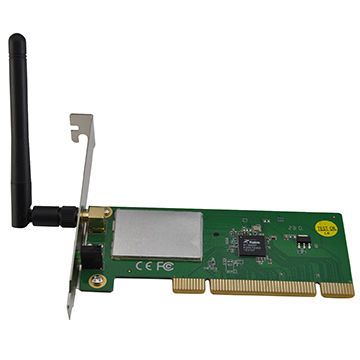

Where there is still a jump in price, however, is routers. When it comes to pricing most devices you buy have already integrated 802.11ac so you won’t be consciously paying more for it. Some devices are still use ‘Draft’ 802.11ac and while they tend to work fine and should eventually update, it isn’t guaranteed. One caveat: make sure you find officially certified devices (using the official WiFi logo). Thirdly with proliferation comes scales of economy which bring down the price. Secondly it is more battery efficient because WiFi needs to be active for less time when data transfers can complete more quickly. Firstly there are obvious performance benefits, particularly for single antenna devices like smartphones.
#RALINK WIRELESS LAN CARD NEDIR TV#
Now it is built into every premium smartphone, tablet, laptop and smart TV and is increasingly found in midrange devices as well. 12 months ago 802.11ac equipment was hard to find and extremely expensive. Of course these figures are a general guide and I’ll get into examples of more specific top 802.11ac devices to buy next.Ĩ02.11ac ns 802.11n Availability and Price

It is built into the 802.11ac specification and is ‘smart signal’ which detects where connected devices are and increases signal strength specifically in their direction. This is why you should place your router as close to the centre of your home or office and as high up as possible.īeamforming is different.

Typically wireless signal is simply thrown out from your router equally in all directions, like ripples when throwing a stone into a pond.
#RALINK WIRELESS LAN CARD NEDIR FREE#
Why? Firstly because 2.4GHz is used for everything from cordless home phones to microwaves and 5GHz remains relatively interference free for a cleaner signal.

That said my experience testing both standards finds very little difference in signal strength between 802.11ac over 5GHz and 802.11n over 5GHz and 2.4GHz. Higher bands are faster but lower bands travel further. In fact 802.11ac uses the 5GHz band while 802.11n uses 5GHz and 2.4GHz. It’s speeds at long range are.įirst the bad news: 802.11ac WiFi doesn’t really reach any further than 802.11n WiFi. So AC WiFi is much faster, but its peak speeds are not really the selling point. Especially when it comes to the next big benefit of 802.11ac…īeamforming 'Smart WiFi' - image credit Netgear This is something of a downer, but these speeds are still faster than nearly all home broadband connections and only become a limitation for transferring files wirelessly between devices on your local network (say laptop to laptop or desktop to NAS).įurthermore 802.11n only supports up to four antennas at roughly 100Mbps (12.5MBps) each so when you do the maths for devices using 802.11n antennas the gap begins to widen. If your glorious four antenna 802.11ac router is connecting to your single antenna 802.11ac smartphone then 400Mbps (50MBps) is your theoretical maximum and 200Mbps (25MBps) is the more realistic one.


 0 kommentar(er)
0 kommentar(er)
